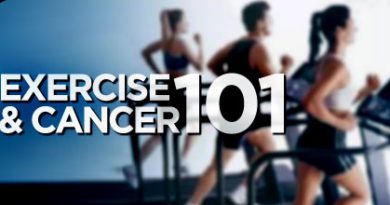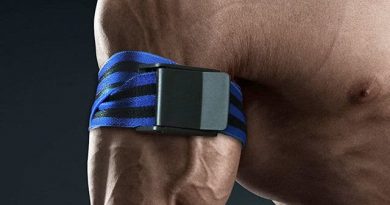Demolish Fat Cells With This HIIT Workout
If you’re anything like me, you consider “cardio” to be a six-letter curse word. I try to avoid cardio at all cost and heck, I’m in the industry and shouldn’t be saying those things. Personally, I don’t consider cardio fun and when speaking to others, they tend to agree. It’s boring and quite honestly after a workout, the last thing I want to do is spent another 30-60 minutes doing cardio. So, what if there was a solution to get you in and out in no time while burning fat and preserving muscle mass? That’s where a HIIT workout comes into play.
Disclaimer: This article is for informational purposes only and is not meant to treat or diagnose any condition. It is recommended that you speak with your doctor before starting any exercise program, changing your daily nutrition, or adding any supplements to your regimen.
What is HIIT?
A HIIT workout (high-intensity interval training) is where you exert 100% maximum effort in short bursts while including recovery periods in between. So rather than doing a steady-state form of cardio such as walking on a treadmill for 30+ minutes at 3.5mph (BORING), you would do an all-out sprint for around 30 seconds with a 60-second recovery where you walk. You complete this multiple times to fit in a 15-20 minute (or longer if you wish) HIIT workout to burn more calories than you would in the steady-state form.

The purpose of a HIIT workout is to keep your heart rate elevated to allow you to burn more calories in a shorter amount of time. You can think of it as being more efficient with your time and effort. You can get in a 15-20 minute HIIT workout and burn as much (if not more) calories than you would doing a slow steady-state form of cardio for upwards of 60 minutes.
However, you need to keep yourself in check and be honest with yourself. If you don’t exert maximum effort during your short intense phases of the HIIT workout, you’re only cheating yourself out of results and benefits.
Why Should You Consider Utilizing a HIIT Workout?
When you look at athletes who use quick bursts of energy versus those who do a slow and steady activity, do you notice a difference in their physiques? Look at someone like a sprinter and compare them to a marathon runner. Drastically different, right?
The sprinter generally carries more lean muscle mass, especially in the legs, while the marathon runner is lean but does not have much lean muscle mass. Sprinters utilize a training program that resembles that of a HIIT workout. It has very intense bouts of exercise with some recovery periods.
How else can a HIIT workout benefit you?
- Help boost your metabolism
- No fancy gym equipment required
- Can be completed indoors or outdoors
- Support cardiovascular health
- Can be done alone or with a group of people
- Challenge yourself physically as well as mentally
- Maximize your results by being efficient with your time
- Preserve your hard-earned lean muscle mass while burning fat
- Continue to burn calories even after completing a HIIT workout
There have been many studies done looking at the effectiveness of utilizing a HIIT workout. In one study1 which lasted eight weeks, a group of HIIT participants was compared to slow steady-state and at the end of the study, researchers found that the slow steady-state did not lose any amount of body fat while the HIIT group lost two percent body fat. Additionally, those who were part of the HIIT group burned on average around 100 more calories per day than their counterparts.
Another study2 looked at the overall effectiveness of a HIIT workout when it came to fat oxidation in the short-term. Most people look for long-term effects when in reality, you can see benefits quite quickly from using HIIT. Researchers asked a group of women to complete seven HIIT sessions in a two-week timeframe. Following the two weeks, researchers noticed that the participants had a thirty percent increase in fat oxidation.
Research backs the use of HIIT and with all the benefits that you can yield, it makes sense to consider adding it to your own training program – especially if your goal is to burn fat while preserving lean muscle mass.
In an effort to help you along the way, I have put together a HIIT workout below that you can utilize and toss in your training. It should be mentioned that this is just one of many HIIT workouts you can utilize and it would be a good idea to change them up from time to time to keep things fun and fresh. Challenge your mind and body to move closer towards your health and fitness goals.
*Note: Any form of exercise comes with some inherent risk. An intense program such as a HIIT workout can have negative side effects if you have health issues known or unknown. It would be wise to consult with your doctor to ensure you are healthy enough before engaging in any workout program, including the one found below.
15-Minute HIIT Workout
The HIIT workout I have laid out below will consist of sprinting, jogging, and walking. It combines intense bouts of exertion with recovery sessions. The purpose is to keep your heart rate elevated to not only burn calories and fat but also improve your cardiovascular health.
To start things off, walk for five minutes to help get the blood pumping and muscles warm. This can help prevent injuries and get your body ready for the workload ahead.
Following your warm-up, move directly into the workout below. It can be done outside on flat terrain or in the gym on a treadmill (the choice is yours). Move from one to the next without stopping. Each circuit will last five minutes. Once you go through it once, repeat two more times, providing you with an intense 15-minute HIIT workout.
| Exercise | Duration |
|---|---|
| Sprint | 30 seconds |
| Jog | 3 minutes |
| Sprint | 30 seconds |
| Walk | 1 minute |
| Repeat 2 more times (or more if desired) | |
Once you’ve completed the 15-minute HIIT work, cool down with a 5-minute walk. Congrats! You’ve completed an intense fat-burning HIIT workout!
References:
- King, J.W. “A comparison of the effects of interval training vs. continuous training on weight loss and body composition in obese premenopausal women (thesis).” East Tennessee State University, 2001.
- Talanian, J.L., et al. “Two weeks of high-intensity aerobic interval training increases the capacity for fat oxidation during exercise in women.” Journal of Applied Physiology. 102(4):1,439-1,447, 2007.


*Disclosure: This article may contain affiliate links or ads, which means we earn a small commission at no extra cost to you if you make a purchase through these links. These commissions help support the operation and maintenance of our website, allowing us to continue producing free valuable content. Your support is genuinely appreciated, whether you choose to use our links or not. Thank you for being a part of our community and enjoying our content.
PLEASE CONSIDER SHARING THIS ON YOUR SOCIAL MEDIA TO HELP OTHERS LEARN MORE ABOUT THIS TOPIC.





